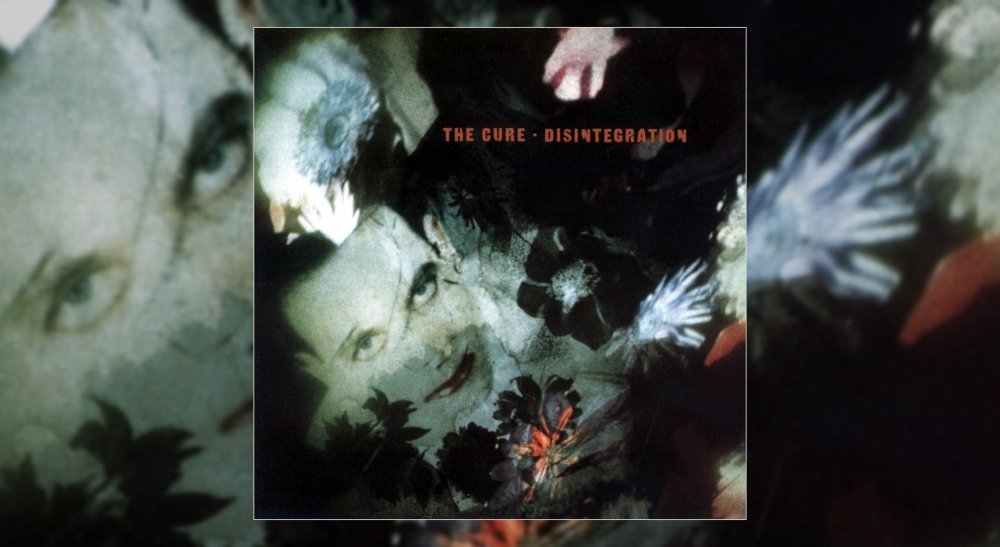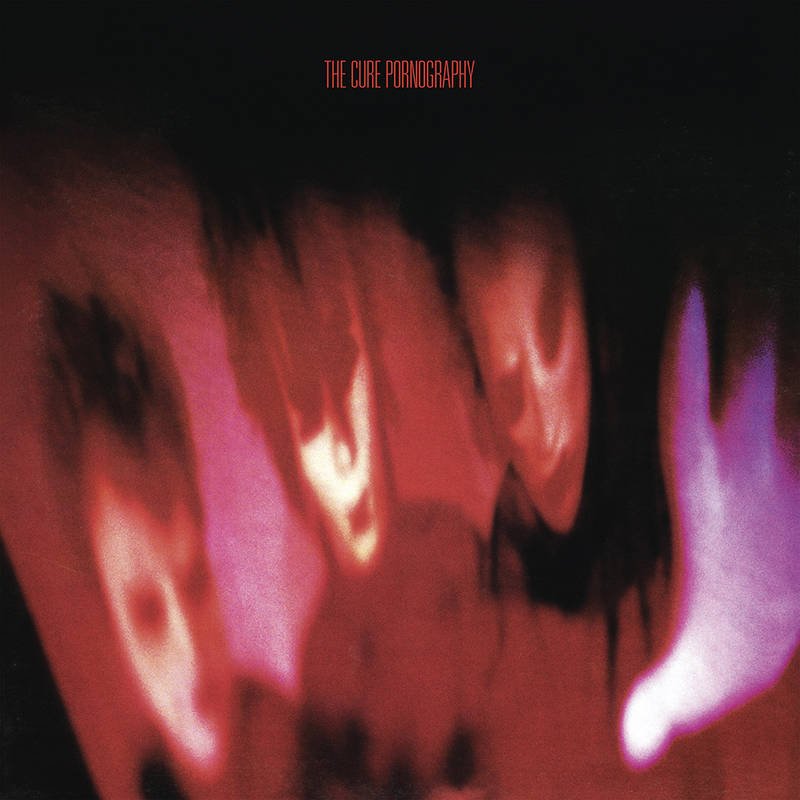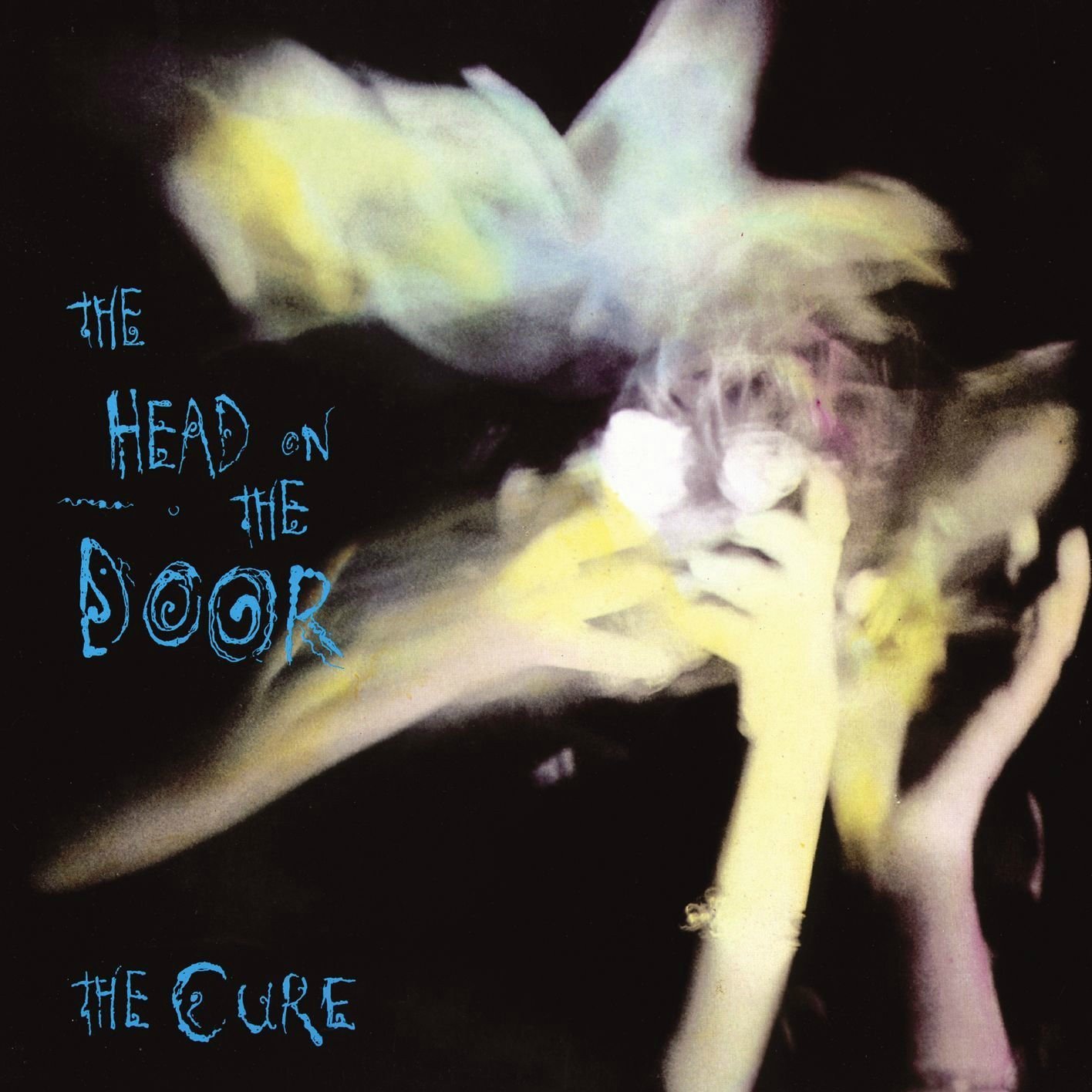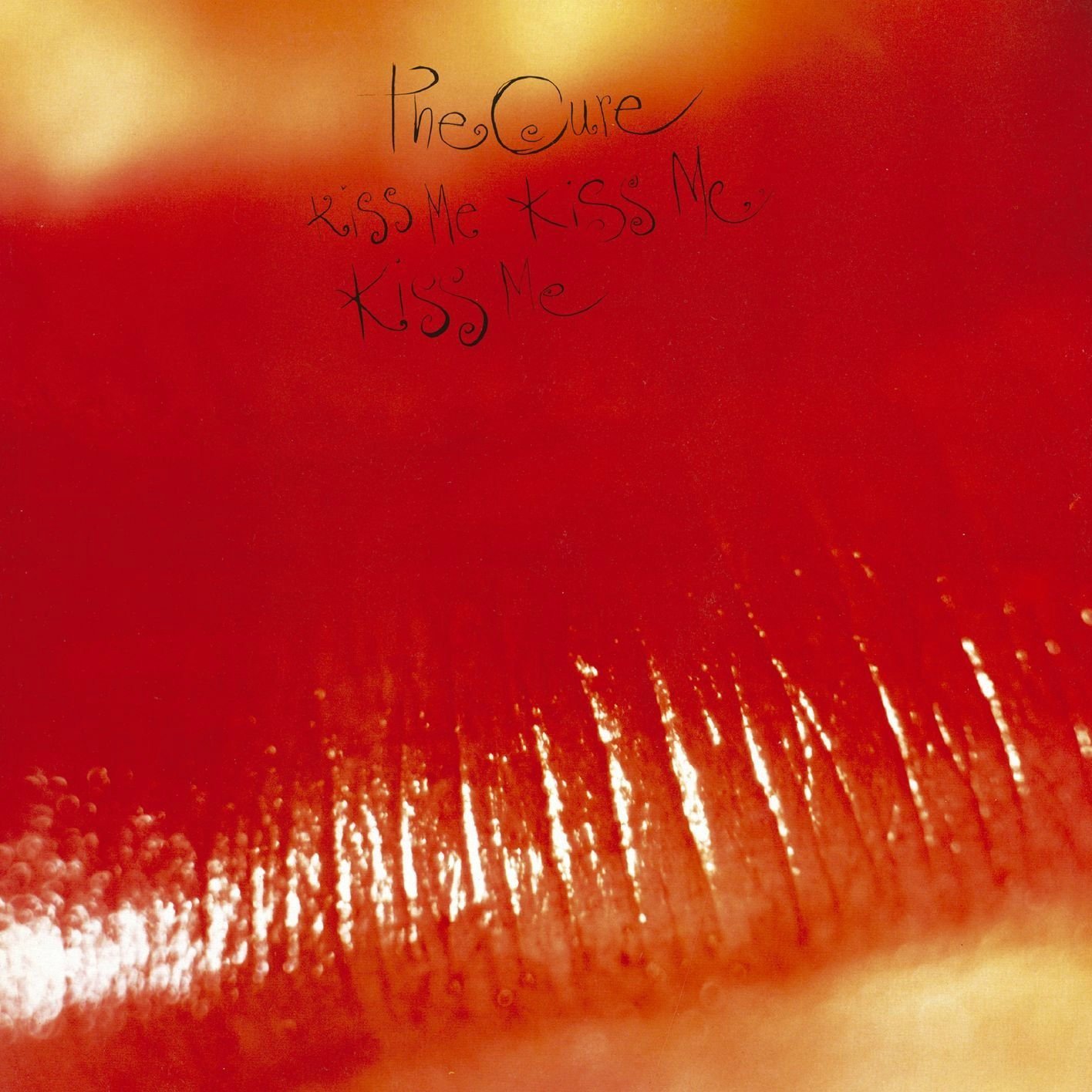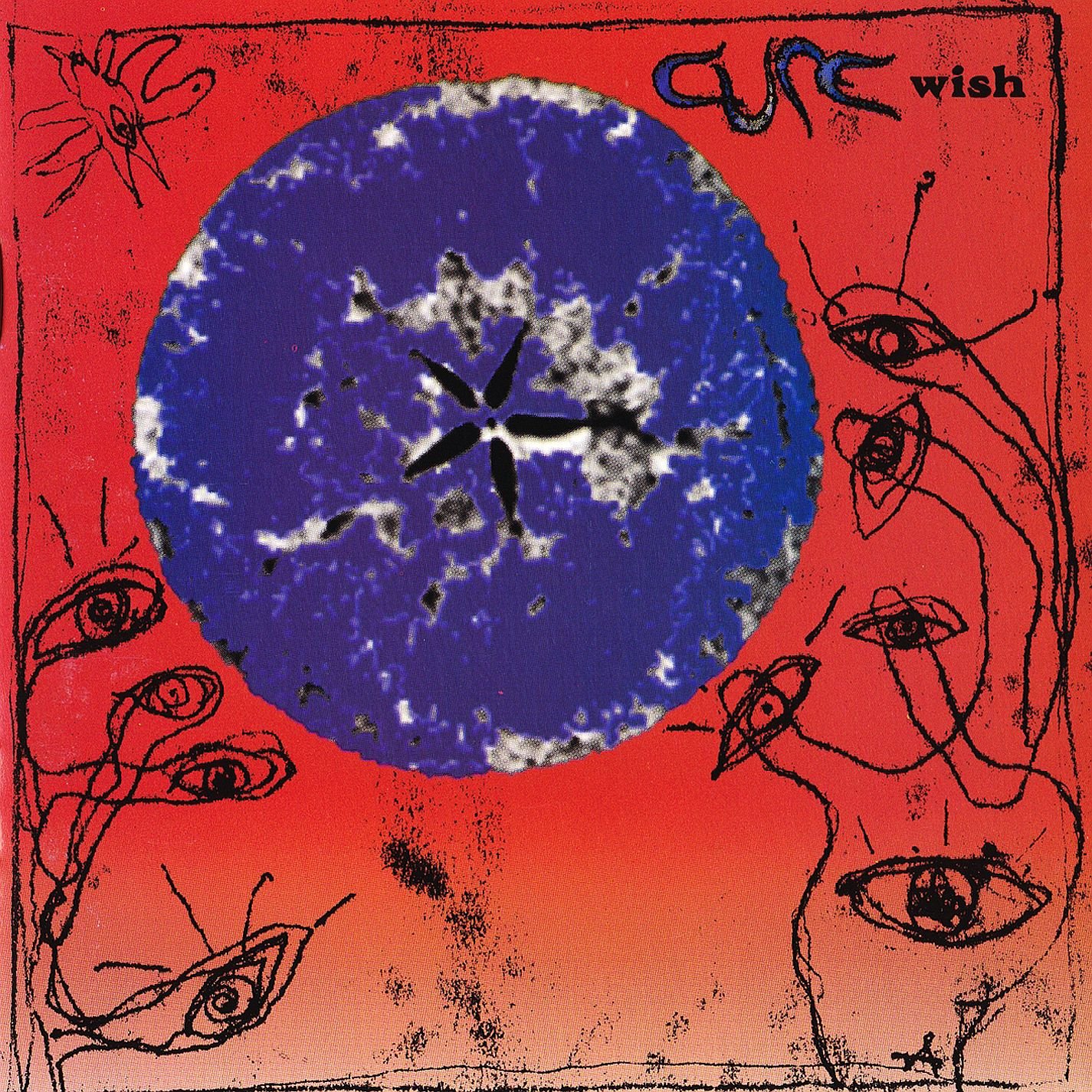Happy 35th Anniversary to The Cure’s eighth studio album Disintegration, originally released May 2, 1989.
I am not alone when I say The Cure’s Disintegration fills my heart with endless love and gratitude. It’s the album I’ve listened to the most, having carried me through so many incredibly painful times and thousands of reflective reveries, too. It’s a work of true genius—a masterpiece that will never stop giving.
At this point, I don’t even need to play Disintegration to go there inside my head. Every gorgeous note, chord, word and feeling is sacred to me, reaching even my deepest cosmic tethers, casting comforting light on the stardust inside. It’s hard to imagine there was ever a time I navigated the world without Disintegration, and I truly don’t know where I’d be without it.
The liner notes state, “This music has been mixed to be played loud / so turn it up.” And really, you’d be an idiot not to fully immerse yourself in this synesthetic realm. It’s nothing short of a spiritual experience, and it’s no wonder the concerts The Cure played in support of Disintegration were collectively named The Prayer Tour.
Since discovering The Cure my junior year of high school, I actively lamented the fact I wasn’t born 10 years earlier. I would give anything to go back in time and experience The Prayer Tour. But, as phenomenal as The Cure sound today, it would’ve been extraordinary to behold them in those first scintillating moments of coming into their own (though realistically, we’ll never know if my heart could have actually bore it).
I can almost feel the gentle wind whipping (“like it’s the end of the world…”) across Europe and North America’s biggest stadia that once-in-a-lifetime summer, as the whole of Disintegration came to life on stage. Coinciding with the album’s release in May 1989, The Cure embarked on a tremendous, 76-show tour, including a legendary three-night stint at London’s Wembley. Thinking about it all still makes me shiver. These are the electrifying nights every Cure fan dreams of, whether there in truth or retroactive spirit.
But, for the band, reality was quite different. Before the tour even set forth, The Cure were forced to cut ties with founding member Lol Tolhurst due to his prolonged alcohol-induced dysfunction and instability. Later, the massive size of the venues and the obsessive nature of some fans, particularly those in the U.S., coupled with the arduous touring schedule, proved to be exhausting. By the end, Robert Smith was ready for a break from the stage.
Although he’d never envisioned playing venues quite so large as the 50,000-person capacity Dodger Stadium in LA, he had achieved his underlying milestone vision. The year before his 30th birthday, Smith challenged The Cure to create something truly meaningful and enduring. Out poured the incomparably divine Disintegration.
From drummer Boris Williams’ house in picturesque Devon to Outside Studios near the Thames River to London’s RAK Studios (recording home of The Cure’s fourth album Pornography), the making of Disintegration saw several distinct stages, stretching across the summer, fall and winter of 1988.
Listen to the Album:
In June, the band—consisting of singer and guitarist Smith, bassist Simon Gallup, guitarist Porl Thompson, keyboardist Roger O’Donnell, percussionist Williams and “other instrumentalist” Tolhurst—convened at Williams’ house to sort through demos the members had individually assembled, including sketches that would become “Lovesong,” “Untitled” and various B-sides. Smith brought several instrumental demos composed in response to movie clips he’d received from various film studios. In the liner notes of the 2010 Disintegration remaster, he recalls, “That process of watching clips with a view to scoring definitely helped trigger ideas. It also encouraged me to focus on writing longer, more cinematic pieces, rather than just think about Cure songs.”
After identifying the tracks with the greatest potential, the band spent the remainder of a fortnight recording approximately 30 demos on 4-track tapes. The Cure then took the next two months off (notably, so that Smith and longtime girlfriend Mary Poole could focus on their August wedding) before returning to Devon. As summer slipped into fall, the band laid down some of the album’s most stunning tracks, including “Plainsong,” “The Same Deep Water As You” and “Disintegration” itself.
By October, Smith completed the wondrous words to The Cure’s eighth studio album, and the band reconvened for a third time that year to begin recording. Smith recalls, “We could have gone anywhere in the world. But I wanted to make something autumnal and English. We needed to be somewhere reasonably remote…and I knew if we had the smell of burning wood and rotting leaves in the air, darkness by 4 pm, the likelihood of thunder and rain… Well, it couldn’t help but put us in the right mood to record!”
However, things didn’t go exactly as planned at their recording home in the Thames Valley. The very first night, Smith’s room at Outside Studios caught fire, nearly destroying the opus to be. Defying pleas from studio staff, Smith, supported by his bandmates, entered the burning chamber and miraculously rescued the lyric-pressed pages, many of which were already ablaze.
If Smith had previously committed to crafting a career-defining album, the conflagration only redoubled his efforts, eventually causing him to retreat from the rest of the band. Having lost his original room to a fury of flames, he withdrew to the attic and began to refine the record with co-producer Dave Allen, who had collaborated on The Cure’s three preceding studio albums, Kiss Me Kiss Me Kiss Me (1987), The Head on the Door (1985) and The Top (1984) as well as their first live album Concert: The Cure Live (1984).
“Although we recorded pretty much all the album and B-side tracks as a band, playing together in the main studio room, I knew the overdubbing and singing parts of the process needed to be a lot more personal. I was lucky at the time to have a band that wanted to understand, without getting upset, why I needed to be left alone. They realised that they had played their part, and that we couldn’t finish the album I wanted any other way,” reminisces Smith.
Smith finalized Disintegration at RAK Studios in December and soon held listening parties for the band and The Cure’s label, Fiction Records. While the majority of the band marveled at how fantastic it sounded (Tolhurst’s beyond-inebriated negative opinion was promptly dismissed at that point), Fiction representatives were worried the album was too slow, with too many long instrumental intros, to attract radioplay and sales. Fortunately, Smith trusted the songs’ “strong, immediate melody and interplay” and The Cure’s growing fan base, and the rest is double-platinum history.
Watch the Official Videos:
The life-changing album begins with the romantically atmospheric “Plainsong.” Oh, despite the countless times this majestic track has graced my undeserving ears, I still succumb to all manner of swooning. I’ve said it before and will emphatically reiterate this forever: The Cure have a masterful ability to craft the most entrancing album openers that not only immediately pull you into their world, but also introduce key themes that follow. And, this rare gift is never so evident as with “Plainsong.”
Skin-tingling chimes quietly jingle for some 20 seconds before exploding into shimmering orchestral bliss—an eternity of beauty born in one spellbinding burst. A faraway chanting effect, characteristic of religious plainsongs, occasionally breezes across the synth melody, cascading the unspeakable magic. Were “Plainsong” solely instrumental, it would have been memorably transcendent, but we can always count on Smith to elicit even more feeling.
By the time he starts singing more than two-and-a-half minutes in, we’re already fully adrift in this mesmerizing world. And then the story really begins. The lyrics obliquely paint a picture of two lovers at the edge of time and space, enveloped in a moment that’s theirs alone. Depending on my emotional state (and admittedly the state of my love life), I’ve interpreted this song at least a dozen different ways. And actually that’s true for the majority of Disintegration. It’s rapturously introspective and revealing.
The twinkling, yet heartbreaking single “Pictures of You” follows. It’s another song of supernova grandeur, transmuting the soul into a million bits of luminescent fervor. Inspired by photos of Smith and Poole that he’d salvaged from the fire, the expansive lyrics seemingly chronicle the dissolution of an intimate relationship in the most tender of ways.
The album’s third track, “Closedown” is probably my favorite (should I be forced to choose!). Slotted between two singles, the relatively short song is often overlooked, but I truly believe it captures the essence of the album. Much of Disintegration references the trials of aging—and the emotional detachment and anesthetizing that often comes with it. “Closedown” is the most direct articulation of this fear, eloquently embodying the yearning we all have to remain young at heart: “I'm running out of time / I'm out of step and closing down / And never sleep for wanting hours / The empty hours of greed / And uselessly / Always the need / To feel again the real belief / Of something more than mockery / If only I could fill my heart with love.”
And yet, I remember clinging to these lyrics even at the age of 17, laying on my bed, depressed and disconnected, with headphones on and reading light pointed toward the wall. Although it’s called “Closedown,” I also find the song hugely redemptive in its unrelenting search for meaning.
Written for Poole as a wedding gift and released as a single to chart-topping glory a week after their one-year anniversary, Smith’s “Lovesong” is an open declaration of undying love for his new bride—one I’m sure she cherishes to this day. For anyone not familiar, the story of the couple is exceedingly sweet. The two fell in love at the age of 14, and decided to get married at the age of 29, when they had known each other longer than they hadn’t. I adore the resplendent gesture and am so glad it exists, but “Lovesong” isn’t one of my top picks from Disintegration, though I do find delight in Smith’s unexpected utterance of “fly me to the moon” buried in the mix—perhaps echoing Sinatra’s classic song of the same name.
Enjoying this article? Click/tap on the album covers to explore more about The Cure:
“Last Dance” offers a different take on the bittersweet melancholy imbuing the album’s first two songs. Again, Smith draws attention to the passage of time and how that can shape a relationship. Through no fault of either party, two lovers, once so close, are now distanced: “But Christmas falls late now / Flatter and colder / And never as bright as when we used to fall / And even if we drink / I don't think we would kiss in the way that we did / When the woman / Was only a girl.” Incredibly pretty, with just the right sighing balance of pining and acquiescing, “Last Dance” foreshadows the contents and mood of the album’s second half.
But, first, two more singles—and a bit of fun. Thematically quite different, but somewhat provocative in their own right, “Lullaby” and “Fascination Street” are slinky little numbers filled with playful vocal stylings and evocative imagery. The thrillingly creepy “Lullaby” recalls a familiar sense of claustrophobia prevalent in The Cure’s canon, only this time more than others, Smith seems a little intoxicated with the idea of surrender. Meanwhile, with its prominent bass, the darkly danceable “Fascination Street” captures the seductive spirit of a nocturnal New Orleans tryst.
Perhaps aching in the aftermath of the “Fascination Street” night gone wrong, “Prayers for Rain” rolls in, swallowing any remnants of levity and signifying a transformation in tone. Where the earlier songs related to love on Disintegration have a mostly plaintive quality (with the obvious exception of “Lovesong” for aforementioned reasons), “Prayers for Rain” shows Smith in an abject state, desperately looking for a way out, “You fracture me / Your hands on me / A touch so plain / So stale it kills / You strangle me / Entangle me / In hopelessness and prayers / For rain / I deteriorate / I live in dirt / And nowhere glows.”
Despite its hostility (or maybe motivated precisely by it), live portrayals of the song give way to immense catharsis, with Smith holding onto the word “rain” for more seconds than seems humanly possible. He explains, “I once read that singing your heart out is the best therapy there is. That probably explains ‘Prayers for Rain’ (that and red wine and orange juice!).”** Oh, Robert.
The album’s longest song, “The Same Deep Water As You,” is that kiss goodbye you never want to end. A favorite of many Cure fans, it’s not hard to understand why. Magnificent in its murkiness, the enigmatic lyrics seem to tell of the last few precious moments of a relationship in a sublimely beautiful way. Burrowed together in an affectionate, if delusional, bundle, they transport themselves to another happier time.
But, as soon as the title track hits, with shattering glass, the fantasy cracks. The ethereal kisses of “The Same Deep Water As You” are vanquished, unflinchingly met with the “kiss of treachery / the shameless kiss of vanity” as the epic “Disintegration” kicks off. Fueled by Williams’ expert drumming, the song follows the eddying journey of a relationship breaking, recounting all the arguments, mistakes and unfulfilled wishes in a vicious storm of emotion, until Smith arrives at the inevitably painful conclusion (“how the end always is”).
Lost in memories and false hope, the meditative, piano-based penultimate “Homesick” dejectedly wanders, entreating “just one more go.” Smith sounds strained and unsteady here, warbled against gleaming piano, as though, through tears, he’s singing himself to sleep.
Closing Disintegration is the deliberately entitled “Untitled” because what name can you possibly assign the host of nebulous regrets and desires that encircle the conclusion of a relationship?
Both “Homesick” and “Untitled” are undoubtedly mournful, but manage to provide some degree of sanctuary after the epiphanic unraveling that is “Disintegration” simply due to their quieter nature.
And certainly by the time the 72-minute album draws to a close, Disintegration feels perfectly complete—a formidable accomplishment for an artist at any age, let alone one on the cusp of his 30th birthday. Effortlessly cohesive, consistently impressive and vividly emotive, the album closed out the 1980s for The Cure, underscoring a prolific decade of unimaginable, growing recognition and success.
For me, and thousands of other fans, Disintegration will always be more than just The Cure’s best-selling album. It’s the one thing that heals our insides when nothing else comes close.
LISTEN:
Editor's note: this anniversary tribute was originally published in 2019 and has since been edited for accuracy and timeliness.

